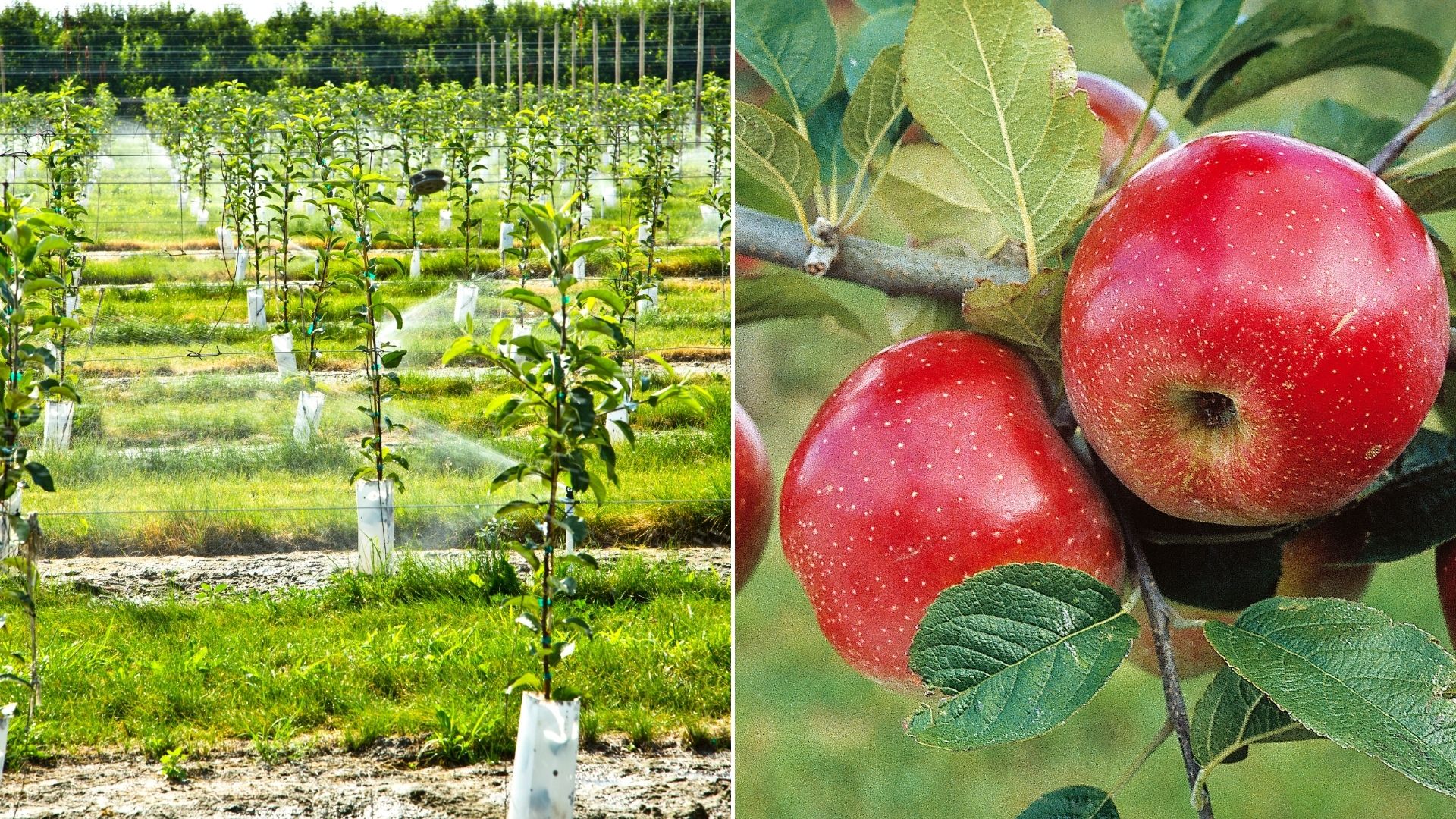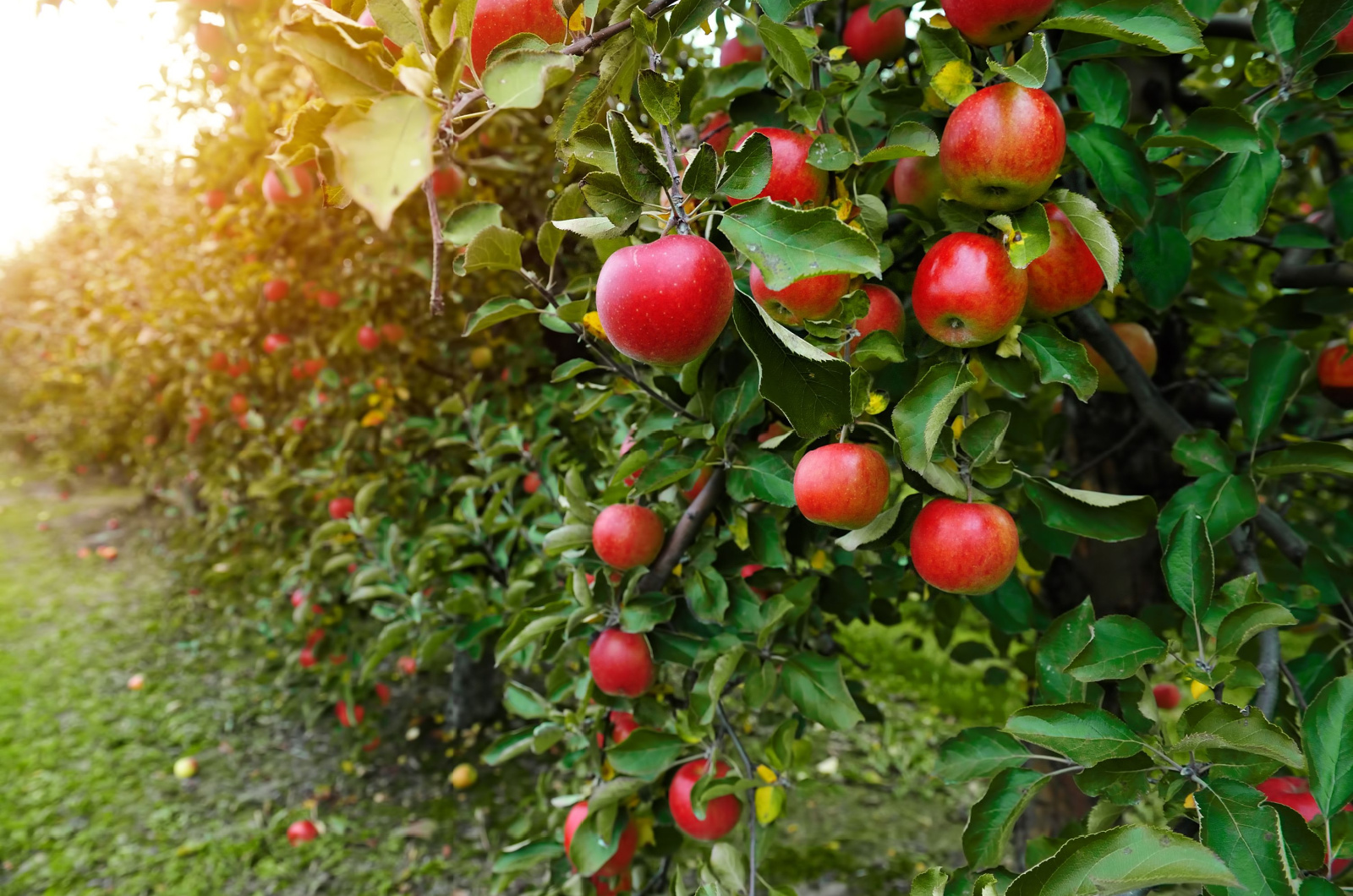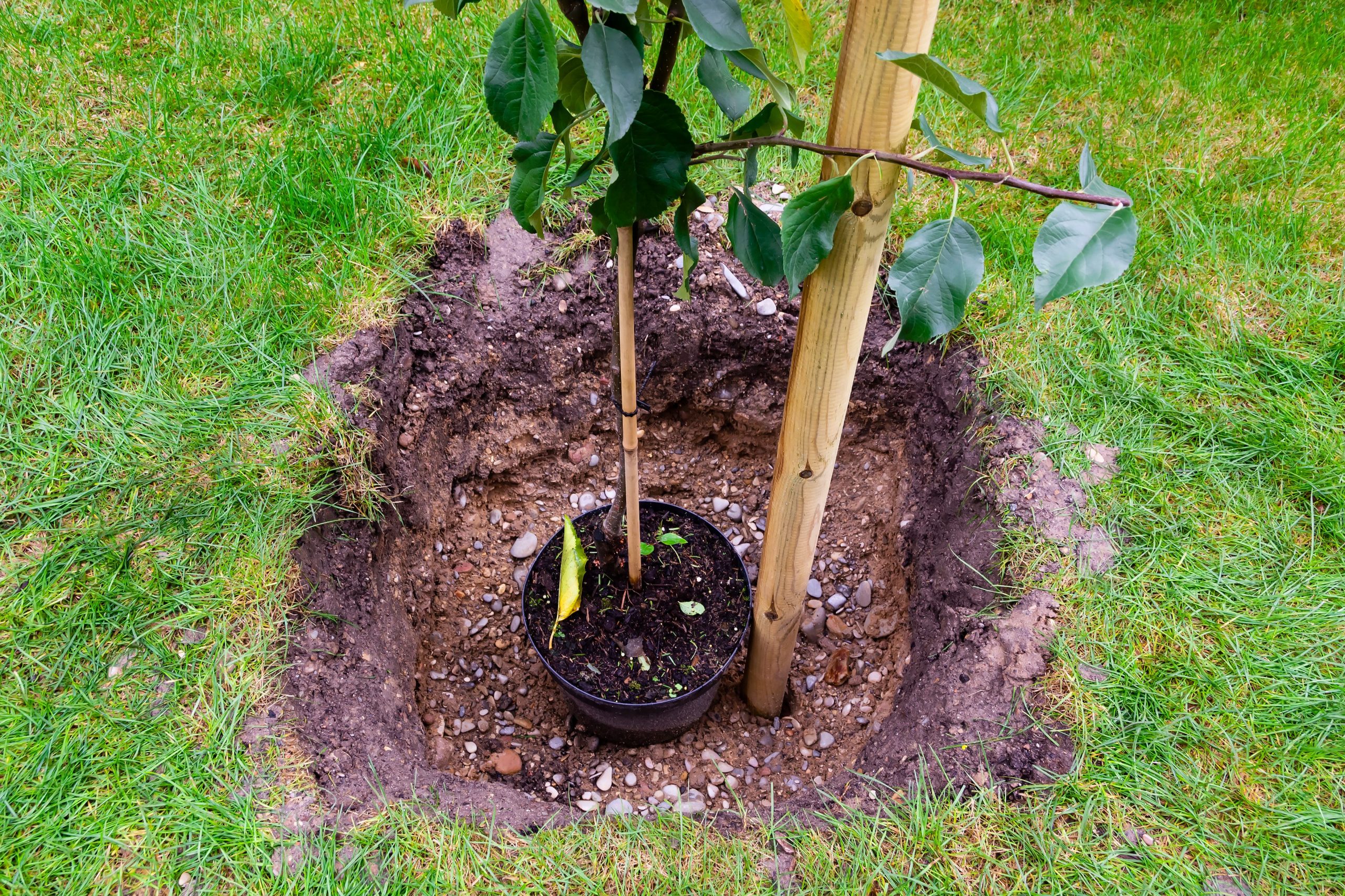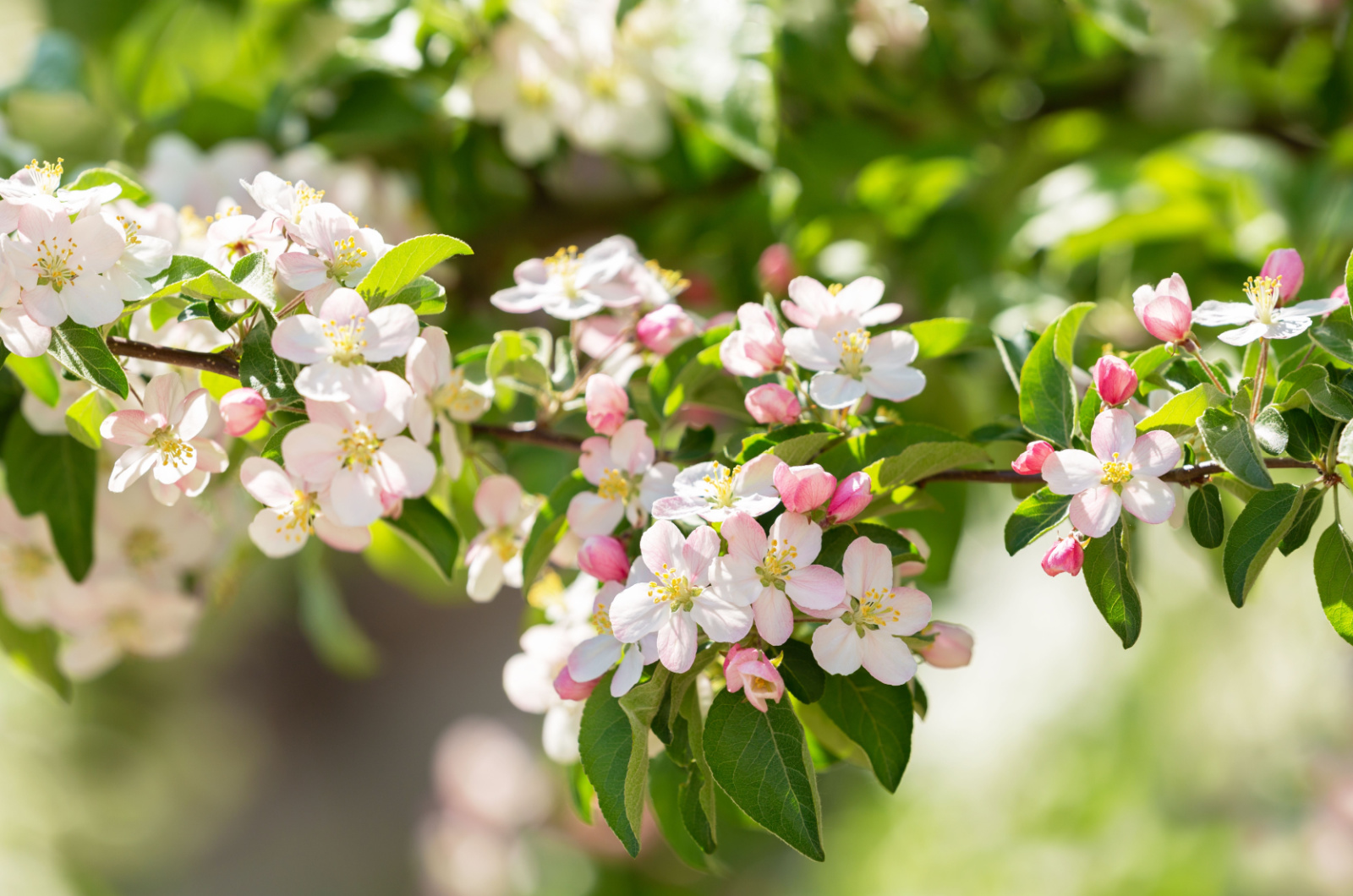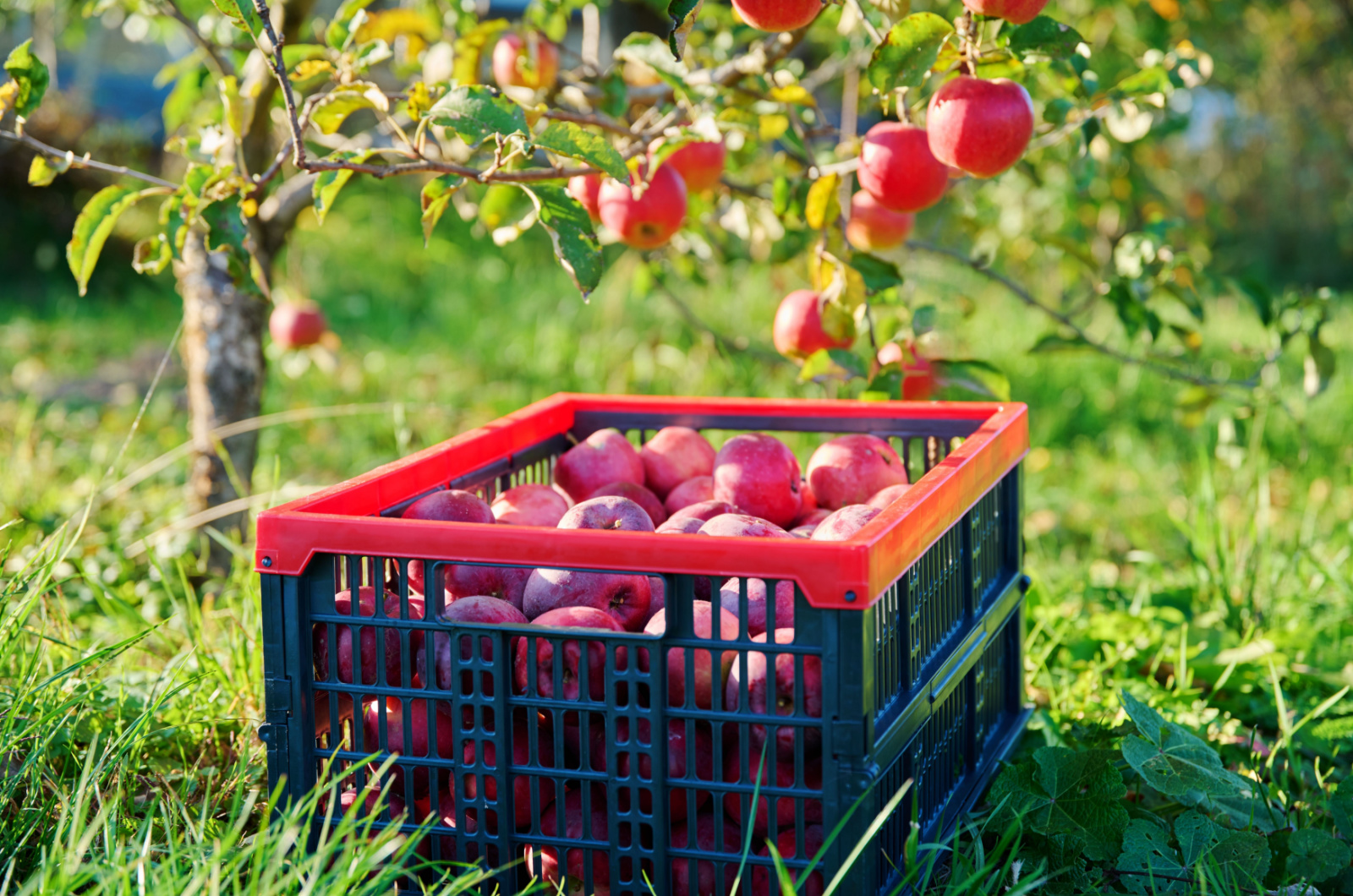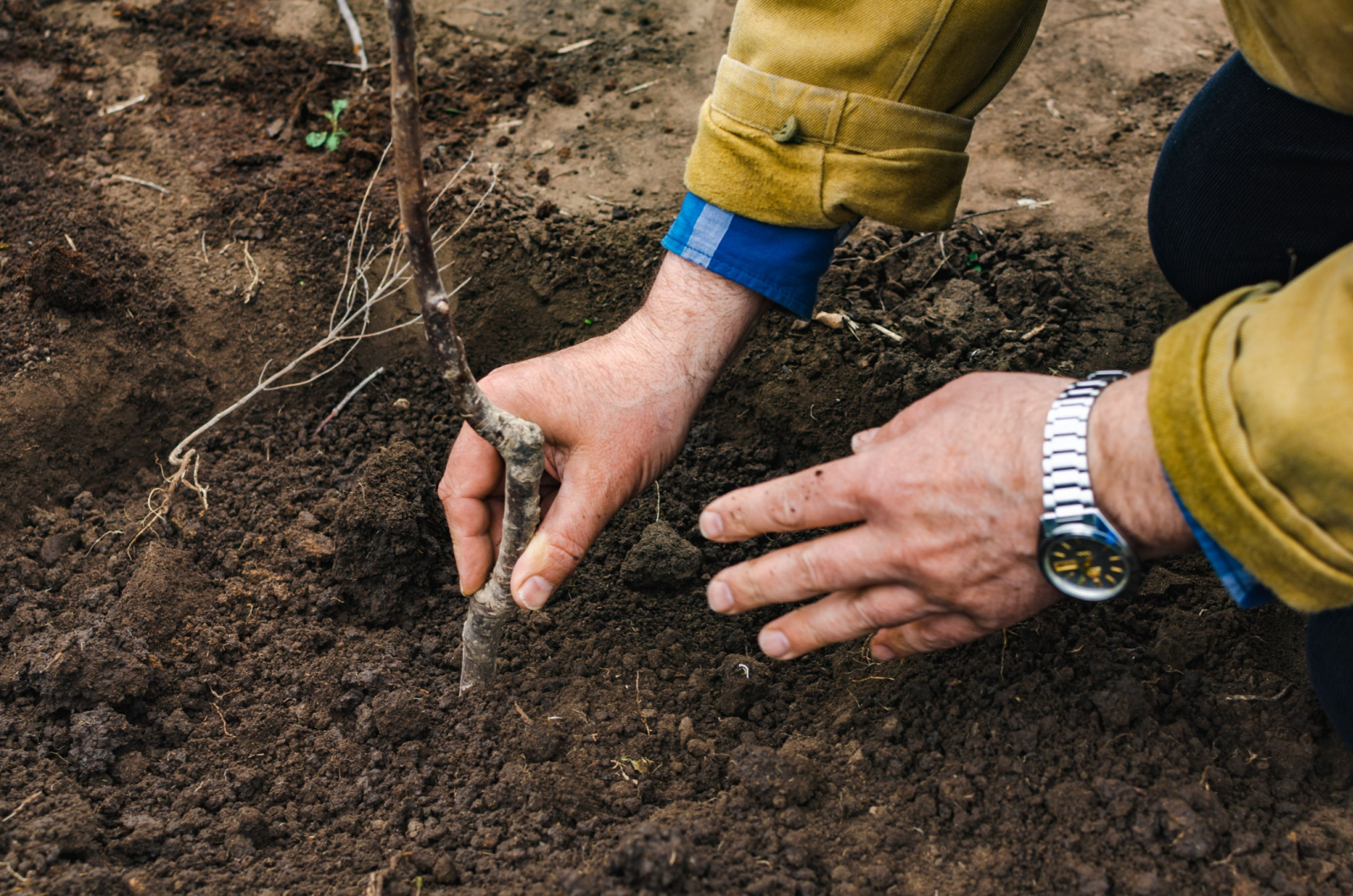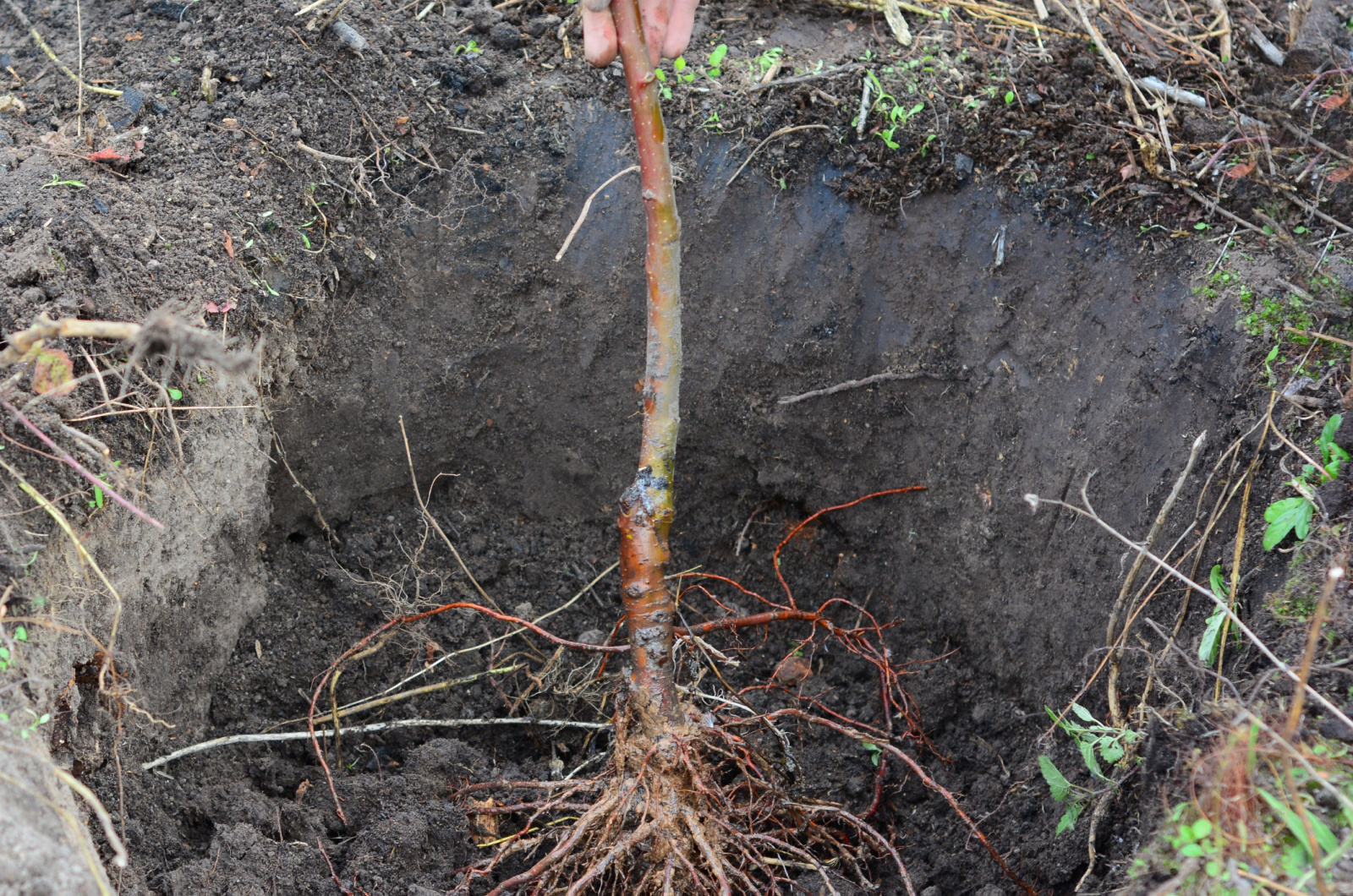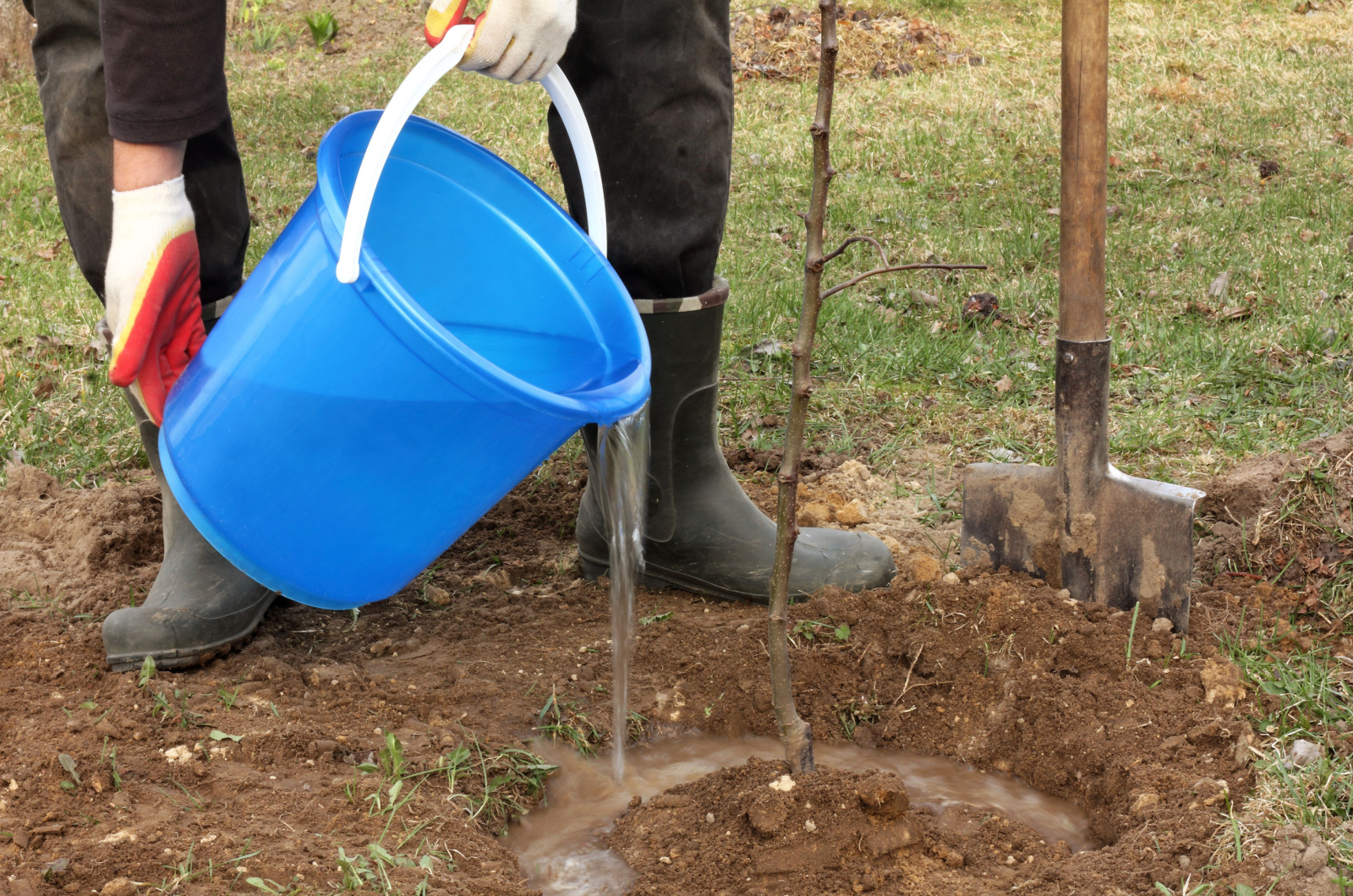Apples are a classical fruit that everybody loves, and growing them ourselves provides great satisfaction once summer or fall rolls round.
But before we can do all this and enjoy the first bite of our homegrown apples, we have to plant them and care for them a bit.
And that’s what I’m here to talk about. Just like other fruit and ornamental trees, you should plant apples while they’re dormant.
When that is, which dormant season is the best for planting, and how to plant apple transplants or seeds are all questions I’ll tackle in this article.
Let’s get started!
The Short Answer
You should plant your apple trees while they’re dormant, and that’s between late fall and early spring.
Of course, don’t wait until the ground freezes solid because digging a deep hole won’t be easy then, while low temperatures could freeze the roots.
Therefore, if you live in an extremely cold climate, I would recommend spring planting, preferably in March or April. And if you live in warmer regions, you can plant your apple trees as long as the soil isn’t frozen, although November is the best time to do it.
And yet, if you live in Florida like I do, or some other state with a similar climate, the best time for planting apple trees is between late December and February.
The Long Answer
If you want a black diamond apple tree or just a traditional Golden delicious or Granny Smith, you should plant them while dormant.
However, dormancy depends on the climate, and planting your apple trees at the wrong time may result in a poor harvest.
Here are some things that can help you avoid this issue!
Importance Of Timing
Seasoned gardeners and those that have just started with this hobby know something about plants and their requirements.
There are cool-weather crops, like broccoli and spinach, that don’t do well in heat, and there are warm-season vegetables, like tomatoes and peppers, that love it.
These things determine when we should plant them, but the situation is a little different when it comes to trees, including apple trees.
Apples require plenty of sunshine during their lifetime, but planting them in heat would be disastrous because it would stress out your tree, sometimes beyond repair.
It may sound contradictory, but planting apple trees during cold weather is the best thing you can do for them. However, don’t wait for the midst of winter to do this since that can also kill your sapling.
Just wait until late fall and plant your tree before the ground freezes, or do it in spring or late winter if the weather permits.
Understanding Apple Trees’ Cycle
All plants go through certain life stages and the same goes for apple trees. However, they don’t go through this cycle at the same time in different climates, which is why it’s helpful to know something about it before you decide to plant them.
Blooming
Apples trees usually bloom around April, although flower buds can appear as early as January.
This plant truly breaks out from dormancy in March, when you’ll notice quick bud opening and true flowers appearing some time in mid-April.
Flowers usually last 1-2 weeks, after which the fruit begins to set.
Of course, there are mid-season apple tree bloomers that flower between mid and late spring, while late bloomers expose their blossoms towards the end of summer.
Harvesting
You can harvest your early-season apples in late summer, although most apple trees are ready for the harvest in fall.
In fact, the apple harvest is currently in progress all over the world and all you and your fellow growers have to decide is how to store the fruits of your labor.
Dormancy
Many gardening chores are done while fruit trees are dormant. For instance pruning apple trees is best done during this period and the same goes for planting.
These trees begin their dormancy in late fall and it lasts until early spring. Of course, the exact months are different.
Apple trees are usually dormant from late December to February, although this stage can sometimes last from November to March or even April.
That’s because apples need a certain amount of chill hours (cold exposure) to set buds and produce plenty of fruit the following year.
That’s why it’s important to go with the right variety for your region. For instance, I wouldn’t plant a tree that requires 1,500 chill hours in Florida when the average is 210-310 according to this houzz post.
You can find chill hours maps online or you can use the data from weather stations. Chill hours accumulate while the temperatures are between 32-45°F, but if you get unexpected heat of, let’s say 60°F and above, you’ll have to subtract it from the total hours you get.
When To Start Planting
It really depends on your climate and the apple variety you wish to grow, but I’d say the ideal time to plant apple trees is in fall.
They’ll settle in their spot and be ready to take off their growth once spring arrives.
But even though I prefer fall or even winter planting, it isn’t the best option for everyone. If you live in a region that gets extremely cold temperatures during winter, it would be best to wait until early spring to plant your apple trees.
And the best part about spring planting is that you don’t have to wait until the last spring frost to do this. These trees are quite frost-resistant and won’t mind being hit with it even when young.
In fact, if you wait until the last frost date, you may miss your planting window. Instead, transplant your apple saplings as soon as you can work the soil.
When To Buy Saplings
The best time to purchase your young bare root (or container grown) apple trees is in summer. Sure, you can still find them in fall and winter, but the best varieties will probably be sold well before that.
Of course, this goes for spring planting since ordering them in spring would be too late. In this case, you’ll have to settle for whatever your local nursery has.
And if you want to plant your trees in fall, getting them in spring is the perfect time. You might not be able to order anything special online, but you’ll find the best varieties for your region at your local nursery.
Apple Tree Planting Basics
There are many guides online that tell you how to plant a tree properly. And when it comes to apple trees there are three main things you need to bear in mind before doing this:
1. Finding a location with full sun
2. Ensuring the soil is well-draining and fertile
3. Having the pH levels between 6.0-6.5
Once you meet all these requirements, you can get to planting. Here are some steps to help you out:
Step 1. Weed out the entire area and remove a circle of 3 feet of grass if you plan on planting on your lawn.
Step 2. Dig a hole 2 feet deep and about two times wider than the root diameter. And if you want to plant more trees, space the holes 15-18 feet apart for regular trees and 4-8 feet for dwarf varieties.
Step 3. Drive a stake into the hole to support your sapling as it grows and prevent it from falling down due to wind.
Step 4. Soak your bare root apple tree in water for a couple of hours.
Step 5. Place your tree into the hole and backfill it with more substrate. Shake the trunk a bit so that the soil can get between the root system.
Step 6. Pat down the substrate with the tip of your foot, fill it with more soil, and water it deeply to help the substrate settle even more.
Step 7. Secure the tree trunk to the stake with a twine or tree tie and then add some organic mulch to suppress weeds, keep moisture in, and insulate the soil.
Here are some more tips for planting bare root trees:
When To Plant Apple Tree Seeds
If you’re feeling adventurous and want a bit of a challenge, you can try growing your own apple trees from seeds.
But know that it may take years to get a small sapling, so be patient.
Here are some steps that you can take when growing apple trees from seeds:
Step 1. Apple trees need cold stratification to wake up from dormancy. You can achieve this by wrapping the clean seeds in a moist paper towel, putting it in an open plastic bag, and keeping it in the fridge for about 6 weeks.
Ensure that the towel is moist at all times.
Step 2. After 6 weeks, some of the seeds should start opening and sprouting. Plant them in a nursery pot or tray filled with a seed-starting mix and care for them like you would for any other seed.
If there are more seedlings, thin them out until you’re left with the healthiest and strongest one.
Step 3. Once your apple tree seedling gets a little large, you can transplant it in a larger container and continue growing it there or transplant it into the ground when the time comes.
P.S. You can cover the seeds planted in pots with a humidity dome or a plastic bag to prevent them from drying out and help them sprout.
Final Thoughts
Growing your own apple trees is a rewarding experience and knowing a thing or two about their preferred planting times will only make it all the more pleasing.
You can even turn it into a whole-family activity, whether it’s apple picking with your children or having them soak the roots of your newly acquired bare root apple trees.

